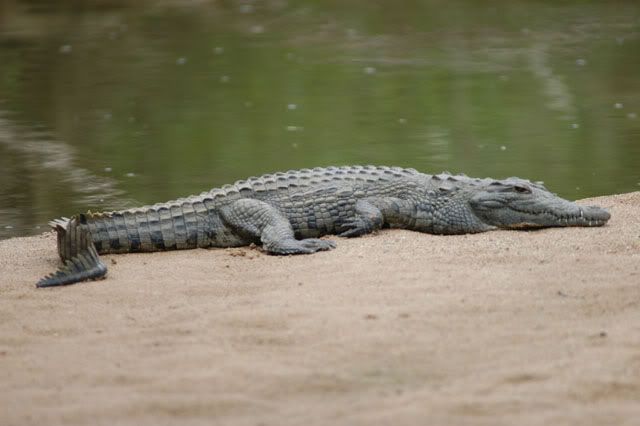Post by dinosauria101 on Mar 16, 2019 7:42:36 GMT 5
Giraffe - Giraffa camelopardalis
The giraffe (Giraffa camelopardalis) is an African even-toed ungulate mammal, the tallest living terrestrial animal and the largest ruminant. Its specific name refers to its camel-like face and patches of color on a light background, which bear a vague resemblance to a leopard's spots. The giraffe is also noted for its extremely long neck and legs and prominent horns. It stands 5–6 m (16–20 ft) tall and has an average weight of 1,300 kg (2,820 lb) for males and 830 kg (1,800 lb) for females. It is classified under the family Giraffidae, along with its closest extant relative, the okapi. There are nine subspecies, which differ in size, coloration, pattern, and range. The giraffe's scattered range extends from Chad in the north to South Africa in the south and from Niger in the west to Somalia in the east. Giraffes usually inhabit savannas, grasslands, and open woodlands. They prefer areas with plenty of acacia trees, which are important food sources, and can browse at heights that most other herbivores cannot reach. While adults are nearly invulnerable to predation, lions, leopards, spotted hyenas and wild dogs prey on calves. Giraffes commonly gather in aggregations that usually disband every few hours. Males establish social hierarchies through "neckings", which are combat bouts where the neck is used as a weapon. Dominant males gain mating access to females, who bear the sole responsibility for raising the young.

Nile Crocodile - Crocodylus niloticus
The Nile crocodile or Common crocodile (Crocodylus niloticus) is an African crocodile which is common in Somalia, Ethiopia, Uganda, Kenya, Egypt, Tanzania, Zambia, Zimbabwe, Gabon, South Africa, Malawi, Sudan, Botswana, and Cameroon. Isolated populations also exist in Madagascar, Senegal. Nile crocodiles have a dark bronze colouration above, with black spots on the back and a dirty purple on the belly. The flanks, which are yellowish green in colour, have dark patches arranged in oblique stripes. The Nile crocodile is the largest crocodilian in Africa and is sometimes regarded as the second largest crocodilian after the saltwater crocodile. The male crocodile usually measure from 11.5 to 16 feet long (3.5 to 5 metres), but very old, mature ones can grow to 18 ft (5.5 m) or more. Like all crocodiles they are sexually dimorphic, with the males up to 30% larger than the females, though the difference is even more in some species, like the saltwater crocodile. Mature female Nile crocodiles measure 8 to 13 ft (2.4 to 4.0 m) Typical Nile crocodile weight is from 150 to 750 kg (330 to 1,540 lb), averaging 527 kg in Limpopo, South Africa. The largest accurately measured male was shot near Mwanza, Tanzania and measured 6.45 m (21.2 ft) and weighed approximately 1,090 kg (2,400 lb).

Credit to Wikipedia
The giraffe (Giraffa camelopardalis) is an African even-toed ungulate mammal, the tallest living terrestrial animal and the largest ruminant. Its specific name refers to its camel-like face and patches of color on a light background, which bear a vague resemblance to a leopard's spots. The giraffe is also noted for its extremely long neck and legs and prominent horns. It stands 5–6 m (16–20 ft) tall and has an average weight of 1,300 kg (2,820 lb) for males and 830 kg (1,800 lb) for females. It is classified under the family Giraffidae, along with its closest extant relative, the okapi. There are nine subspecies, which differ in size, coloration, pattern, and range. The giraffe's scattered range extends from Chad in the north to South Africa in the south and from Niger in the west to Somalia in the east. Giraffes usually inhabit savannas, grasslands, and open woodlands. They prefer areas with plenty of acacia trees, which are important food sources, and can browse at heights that most other herbivores cannot reach. While adults are nearly invulnerable to predation, lions, leopards, spotted hyenas and wild dogs prey on calves. Giraffes commonly gather in aggregations that usually disband every few hours. Males establish social hierarchies through "neckings", which are combat bouts where the neck is used as a weapon. Dominant males gain mating access to females, who bear the sole responsibility for raising the young.

Nile Crocodile - Crocodylus niloticus
The Nile crocodile or Common crocodile (Crocodylus niloticus) is an African crocodile which is common in Somalia, Ethiopia, Uganda, Kenya, Egypt, Tanzania, Zambia, Zimbabwe, Gabon, South Africa, Malawi, Sudan, Botswana, and Cameroon. Isolated populations also exist in Madagascar, Senegal. Nile crocodiles have a dark bronze colouration above, with black spots on the back and a dirty purple on the belly. The flanks, which are yellowish green in colour, have dark patches arranged in oblique stripes. The Nile crocodile is the largest crocodilian in Africa and is sometimes regarded as the second largest crocodilian after the saltwater crocodile. The male crocodile usually measure from 11.5 to 16 feet long (3.5 to 5 metres), but very old, mature ones can grow to 18 ft (5.5 m) or more. Like all crocodiles they are sexually dimorphic, with the males up to 30% larger than the females, though the difference is even more in some species, like the saltwater crocodile. Mature female Nile crocodiles measure 8 to 13 ft (2.4 to 4.0 m) Typical Nile crocodile weight is from 150 to 750 kg (330 to 1,540 lb), averaging 527 kg in Limpopo, South Africa. The largest accurately measured male was shot near Mwanza, Tanzania and measured 6.45 m (21.2 ft) and weighed approximately 1,090 kg (2,400 lb).

Credit to Wikipedia



